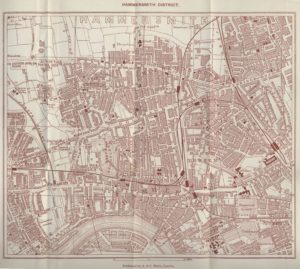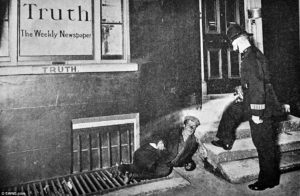Kay Garrett (b.1899): Home and Family Part One
Welcome!
If you’ve been keeping up with these blogs then you’ll have been introduced to the wonderful Kay Garrett and you’ll know all about her memoirs and purpose. If not, there’s time to go back and read them, I won’t tell anybody! But now it’s time we get a little more in depth. This special two part post will focus on a subject that is very dear to Kay Garrett’s heart: home and family.

Kay sure has a lot to say about this subject in her memoir, in fact, the entire first section is dedicated to talking about her family and growing up in Hammersmith, London until she moved out aged 17. But then she shifts her focus onto life with her husband, mother-in-law, sister-in-law and young daughter in Southern Rhodesia, before moving back to London again and making a home for herself as a single mother during the great depression of the 1930s and World War Two. Part one will focus on Kay’s early life and upbringing and it also includes a recipe that you can try at home!
Firstly, Kay starts her memoir by describing her mother and father. Of them she says that her father was a farmer’s son from Wiltshire who ran away from home to join the army and married Kay’s mother when she was 18, but Kay’s predominant memories of them were that they were drunks. However this wasn’t abnormal during that time, in fact she says that “in our street it was normal for a father to come home drunk on a Saturday night and black his wife’s eyes” (1). This was a source of great heartache for Kay growing up who was more embarrassed by her mother’s drunkenness than her mother’s because he peer at school would make fun of it.

In her memoir, Kay doesn’t mention having any siblings and this in itself is rather peculiar because according to 20thcenturylondon.com women in the late 19th century gave birth, on average, to 4.6 children during their lifetime. Kay also makes no mention of the living conditions during her formative years, but it is widely understood that London in the early 20th century had some of the worst housing conditions in Britain. Overcrowding, vermin and disease were a part of everyday life for working-class families and Kay’s family were not immune. Kay herself suffered from what she describes as a week chest and “had to spend whole winters in bed” (1).
Despite all of this it is clear that Kay had a very happy childhood when her parents were sober. Her father was injured in war after serving in Egypt and received an army pension of £9 per quarter. Strangely, Kay notes that when he didn’t have a job and when forced to live “with her back against the wall mum was splendid” (1). It is also noted in Kay’s memoir that her mother could make a family meal for three for only a sixpence. On top of this, Kay has took the liberty of including the recipe for a typical family meal in her memoir and it goes as follows:
From the butcher:
- two penn’orth of “pieces” (trimmings from joints).
- A penn’orth of beef suet.
From the greengrocer:
- potatoes
- A he’porth of “pot herbs” – a carrot, a turnip, an onion; outside bits of celery or what was in season; a sprig of parsley.
From the grocer:
- A penn’orth of flower
- A ha’porth of golden syrup (you took your own basin or jar; syrup was doled out of a big container with a small ladle.)
Dinner: meat and veg were floured and cut up and browned in dripping. Then put in a saucepan with water and seasoning; at the right time the peeled and thickly sliced potatoes were put on top of the stew and the whole secret of its deliciousness was slow cooking:- oh, and I forgot to add a touch of dried mixed herbs, which mother always kept in her store cupboard.
Pudding: Suet was chopped finely and added to flour, pinch of salt, and water to form a thick “dough” – which was rolled and wrapped in a clean cloth and tied; and put into boiling water, then “steamed” for a couple of hours. It was served hot in thick slices over which was dripped the lovely golden syrup.
The stew sounds delicious, but I think I’ll pass on the desert! What do you think? Let me know in the comments or tweet me
That’s it for part one of Kay Garrett’s home and family life, thank you for reading! If you enjoyed this then spread the word, follow me on Twitter and stay tuned for part two of Kay’s home and family life and other topics.
References:
http://www.20thcenturylondon.org.uk/theme/home-family
2.305 Garrett, Kay, Untitled (c.9,000 words), pp.1-12. Brunel University Library.
Extract published in J. Burnett (ed.), Destiny Obscure: Autobiographies of childhood, education and family from the 1820s to the 1920s (Allen Lane, London, 1982), pp.306-312. Brunel University Library and Ruskin College Library, Oxford.
Vincent, David. ‘ Social History, 5.2 (1980): 223-247
Picture credits:
http://www.afamilystory.co.uk/Images/e20310/map_1.jpg
http://www.dailymail.co.uk/news/article-2988225/Life-slums-hand-account-East-End-life-author-disguised-stranded-sailor-reveals-chronic-misery-London-s-early-20th-century-workhouses.html

Leave a Reply